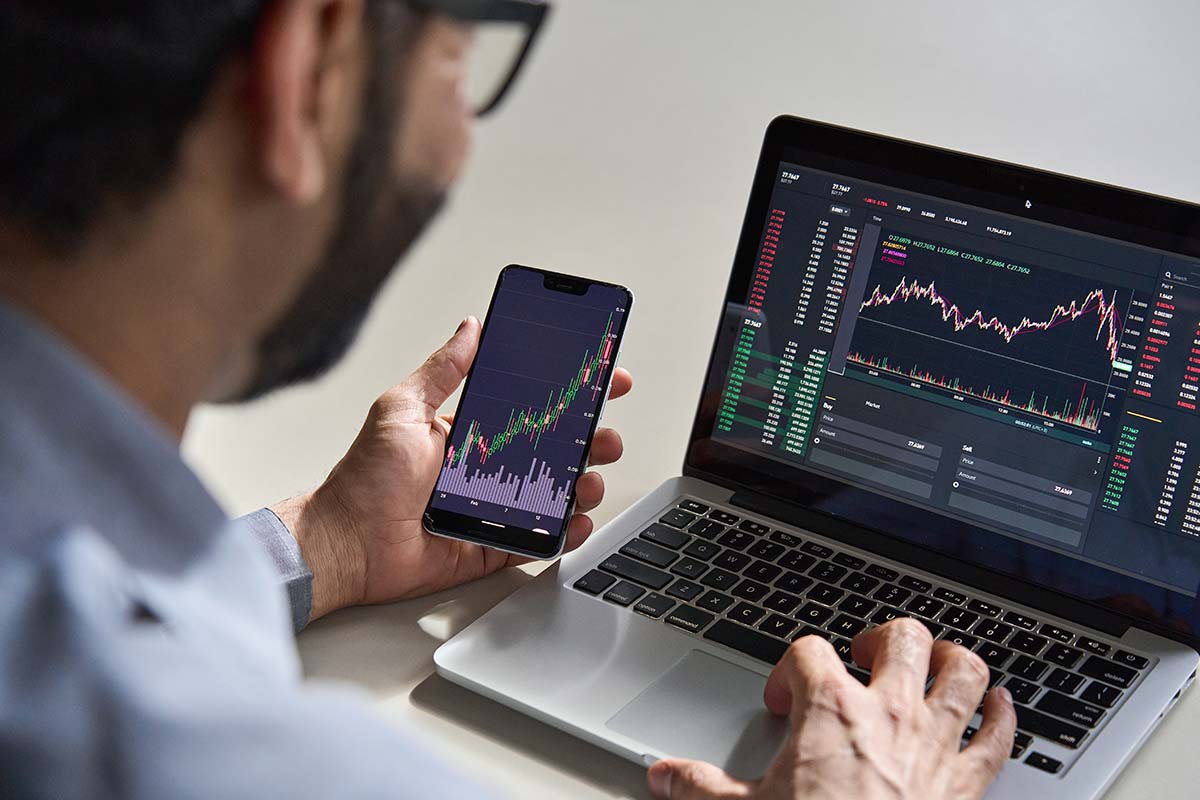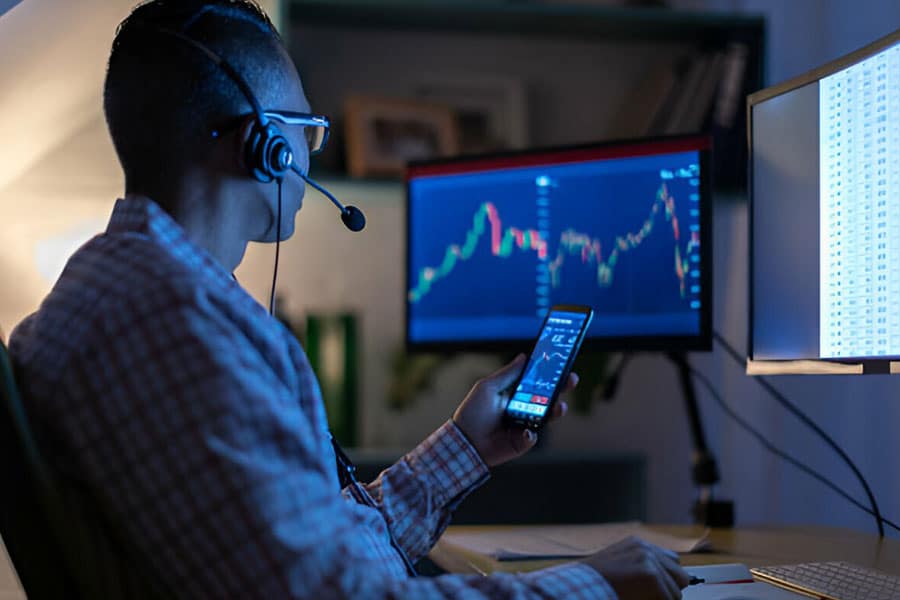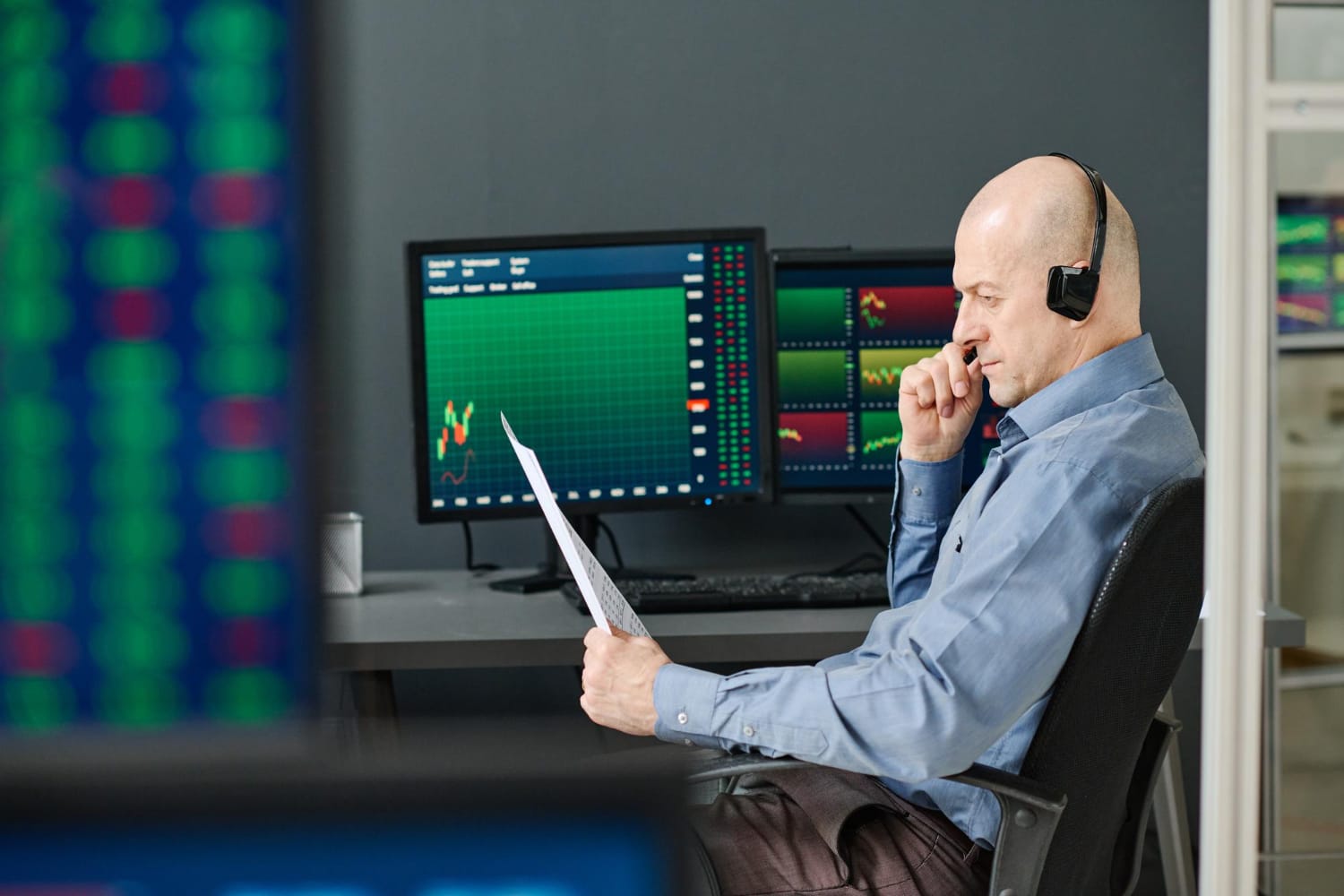You check your platform after a losing night and ask yourself: Is Forex Trading Hard? Part of the answer lies in the tools you use; Expert Advisors and forex robots can automate entries and exits, but they can also magnify mistakes if you do not test and manage risk.
This guide breaks down the best EA for forex trading, covering strategy fit, backtesting, forward testing, profit factor, drawdown control, MT4 and MT5 compatibility, VPS needs, and broker matching. This provides you with explicit, actionable knowledge to confidently choose the most suitable Forex Expert Advisor (EA).
To help you put those ideas into practice, Goat Funded Trader’s prop firm offers funded accounts and a real trading environment where you can validate EA performance, manage risk, and scale successful automated strategies without risking your own capital.
10 Best EA For Forex Trading
1. Forex Fury

Forex Fury is a versatile, high-frequency scalping and trend-following EA designed for both beginners and conservative traders. It adapts well to a range of markets, allowing trades on multiple asset classes, including forex, indices, and cryptocurrencies. Compatible with MT4 and MT5, it offers adjustable risk levels to suit different trader profiles.
Key Features
- High-frequency scalping with trend-following elements
- Multiple risk modes (low, medium, high)
- Compatibility with NFA, FIFO, ECN brokers on MT4/MT5
- Trades forex, indices, and cryptocurrencies
- Proven and updated set files with low drawdown
Strategy Type
Scalping, Trend-following
Best For
Beginners, Conservative traders, Multi-asset traders
Pros
Verified consistent profits, broad broker/platform compatibility, user-friendly installation, and customization
2. Forex Diamond

Forex Diamond employs a multi-strategy approach combining trend-following and countertrend techniques to adapt to various market conditions. This versatility suits experienced traders aiming to diversify portfolios while maintaining flexibility with multiple currency pairs.
Key Features
- Multi-strategy combining trend-following and countertrend
- High adaptability to different market phases
- Capable of trading multiple pairs simultaneously
- Advanced risk management controls
- Good track record of steady performance in volatile markets
Strategy Type
Trend-following, Countertrend
Best For
Experienced traders, Diversified portfolios, Multi-pair trading
Pros
Adaptability to market changes, balances aggressive and conservative strategies, and is capable of reducing drawdowns in volatile markets
3. GPS Forex Robot

Overview: GPS Forex Robot focuses on an auto-adaptive trading system that dynamically adjusts to market conditions. It combines trend-following and scalping strategies to provide low-risk trading options, making it suitable for beginners and cautious traders looking for steady profitability.
Key Features
- Auto-adaptive trading with real-time adjustments
- Customizable risk settings for individual trader preferences
- Combines trend-following with scalping methods
- Suitable for multiple currency pairs
- Backtested for stable low-risk returns
Strategy Type
Trend-following, Scalping
Best For
Beginners, Low-risk traders, Users preferring customization
Pros
Low drawdown, adaptive to market, easy to use with preset risk profiles
4. WallStreet Forex Robot

This EA employs a mix of automated trend and counter-trend strategies to seek consistent long-term growth. It is popular among traders who prefer steady gains over aggressive trading, utilizing solid money management and risk controls suitable for MT4 and MT5 platforms.
Key Features
- Combination of trend and counter-trend automated trading
- Emphasis on long-term growth rather than short-term gains
- Advanced money management settings
- Compatible with major brokers and trading platforms
- Regular updates, adapting to market changes
Strategy Type
Trend-following, Scalping
Best For
Traders looking for long-term growth, Moderate risk tolerance, and Intermediate-level traders.
Pros
Strong capital preservation, consistent performance, flexible trading setup
5. Robotron

Robotron is a scalping EA optimized for high-frequency trades, focusing on limiting drawdown. It targets advanced and aggressive traders capable of managing leveraged positions, focusing mainly on fast market conditions in currency pairs.
Key Features
- High-frequency scalping strategy
- Low drawdown focus
- Detailed entry and exit algorithms
- Performs multiple trades per day
- Requires active management by advanced traders
Strategy Type
Scalping
Best For
Advanced traders, Aggressive traders, Fast market environments
Pros
High trade frequency, adequate risk controls, optimized for fast markets
6. Forex Fury

Forex Fury is a top-ranked automated trading system specializing in high-frequency scalping combined with trend-following techniques. It supports trading across multiple asset classes like forex pairs, indices, and cryptocurrencies, providing flexible risk settings for low drawdown and consistent monthly growth. Suitable for beginners and conservative traders, it is compatible with MT4 and MT5 platforms and supports various broker types.
Key Features
- High-frequency scalping with trend-following integration
- Multiple risk management modes (low, medium, high)
- Broad broker compatibility, including NFA, FIFO, ECN
- Multi-asset trading on forex, indices, and crypto
- Verified live and backtested performance with regular updates
Strategy Type
Scalping, Trend-following
Best For
Beginners, Conservative traders, Multi-asset traders
Pros
Consistent verified profitability, ease of use, and flexible risk control
7. Forex Diamond

Forex Diamond employs a sophisticated multi-strategy approach combining trend-following and countertrend algorithms. This adaptability enables the EA to perform across different market conditions, suitable for experienced traders seeking to diversify their portfolio with a bot that adjusts dynamically to evolving price action.
Key Features
- Multi-strategy approach combining trend-following & countertrend
- High adaptability to varying market environments
- Supports simultaneous multi-pair trading
- Advanced risk management and trade filters
- Consistent performance in volatile conditions
Strategy Type
Trend-following, Countertrend
Best For
Experienced traders, Diversified portfolio holders, Multi-pair traders
Pros
Market adaptability, managed risk exposure, strategies balanced to reduce drawdown
8. GPS Forex Robot

Overview: GPS Forex Robot is an auto-adaptive EA that adjusts its trading parameters based on live market conditions to optimize profitability and minimize risk. Its dual strategy combines scalping and trend-following, making it suitable for low-risk traders who want steady growth with customizable risk profiles.
Key Features
- Auto-adaptive risk and trading parameter adjustments
- Combines scalping and trend-following methods
- Customizable risk settings to fit trader preferences
- Multi-currency pair support
- Backtested with stable, low drawdown performance
Strategy Type
Scalping, Trend-following
Best For
Beginners, Low-risk traders, Traders needing adjustable settings
Pros
Dynamic adaptation, low drawdown, user-friendly risk customization
9. WallStreet Forex Robot

WallStreet Forex Robot uses an automated blend of trend and counter-trend trading strategies aimed at preserving capital and achieving long-term growth. It accommodates intermediate traders looking for reliable, steady performance with a strong emphasis on money management and risk controls.
Key Features
- A hybrid of trend-following and counter-trend trading
- Focus on consistent long-term account growth
- Money management optimized to reduce drawdown
- Compatible with most brokers and MT platforms
- Continuous updates to adapt to changing markets
Strategy Type
Trend-following, Scalping
Best For
Long-term growth seekers, Moderate risk tolerance, Intermediate traders
Pros
Capital preservation, reliable steady returns, and flexible platform compatibility
10. Robotron

Robotron is a high-frequency scalping EA optimized for aggressive traders who thrive in fast-moving markets. It emphasizes low drawdown while executing multiple trades per day, requiring active oversight by advanced users familiar with scalping and leverage management.
Key Features
- High-frequency scalping with precise entry/exit signals
- Low drawdown focus with rapid trade execution
- Capable of multiple trades daily on volatile pairs
- Designed for advanced management
- Optimized for fast market conditions
Strategy Type
Scalping
Best For
Advanced traders, Aggressive scalpers, Traders in fast markets
Pros
Frequent trading opportunities, robust risk controls, optimized for quick market changes
Related Reading
- What Is A Lot Size In Forex
- How Much Do You Need To Start Trading Forex
- How Profitable Is Forex Trading
- What Is Swap In Forex Trading
- Forex Trading Account Types
- How To Learn Forex Trading
- Automated Forex Trading
- Fibonacci Forex Trading
- Pros And Cons Of Forex Trading
- Forex Trading Profit Per Day
What are Expert Advisors for Forex Trading?

Expert Advisors are programs that run inside MetaTrader 4 or MetaTrader 5 and automate a trader’s rules. They read price data, apply indicators such as moving averages, RSI, MACD, and Bollinger Bands, and then send market orders or alerts. Some EAs only generate trade signals while others execute entries and exits automatically. They remove emotion from trade execution and can monitor multiple currency pairs around the clock.
Popular EA Strategy Types You Will Encounter
Scalper EAs aim for small, quick wins and require low latency and tight spreads. Trend following EAs ride sustained moves using moving averages or breakout logic. Grid systems place multiple buy and sell orders at intervals. Martingale-style EAs increase lot size after losses. There are also hedge EAs, breakout EAs, and hybrid systems that combine approaches. Each strategy works in certain market conditions and fails in others.
Backtesting, Optimization, and Avoiding Curve Fitting
You must backtest on quality historical data, ideally tick by tick, to see how an EA would have behaved. Use the strategy tester in MT4 or MT5, along with walk-forward analysis or Monte Carlo tests, to check robustness. Optimization can tune inputs, but excessive optimization leads to curve fitting, where an EA relies solely on past data and struggles in live trading.
What Makes the Best EA For Forex Trading
Look for a transparent live track record, low maximum drawdown, decent risk-adjusted returns, and consistent trade logic you understand. Check broker compatibility, execution type, and required margin. Ask if the vendor provides MQL4 or MQL5 source code or at least documented rules. Consider drawdown recovery time, expected win rate, average trade length, and pip per trade metrics when comparing robots.
Installing and Running an EA on MT4 and MT5
Copy the EA file into the Experts folder, restart MetaTrader, then attach it to a chart. Set input parameters like lot sizing, stop loss, take profit, and allowed trading hours. Enable Auto Trading and allow DLL imports only if you trust the code. Test first in a demo account and then on a small live account to verify execution under real broker conditions.
VPS Hosting and Why Execution Speed Matters
Running EAs on a virtual private server reduces downtime and network latency. For scalpers and high-frequency strategies, milliseconds count. Choose a VPS close to your broker’s server and use an ECN or low-latency account to reduce slippage and spread widening during news events. VPS hosting also keeps EAs running when your home computer is off.
Monitoring, Forward Testing, and When to Pause an EA
Even automated systems need oversight. Monitor live performance, compare it to backtests, and watch for unexpected behavior after broker updates or market structure shifts. Re-run forward testing and re-optimize only when market regime changes are evident. Pause the EA if drawdown exceeds your risk tolerance or if execution issues like slippage and requotes become frequent.
Costs, Licensing, and Where to Find Reliable EAs
EAs come as a free, one-time purchase or a subscription. Some vendors rent access to a hosted server. Pay attention to refund policies, support, and ongoing updates. Look for verified track records on independent sites and community feedback rather than only vendor statements. Open source or source code available EAs let you audit logic and customize risk settings.
How Do Expert Advisors (EAs) Work?

How EAs See the Market: Automated Market Analysis for Forex Robots
Expert advisors act like continuous scanners on MetaTrader 4 and MetaTrader 5, reading price ticks, candles, and indicator outputs every second. They run indicator-based rules such as moving averages, RSI, MACD, and Bollinger Bands, and can combine those signals with price action filters to reduce false entries. Some advanced EAs include machine learning or neural network modules to adapt to changing market regimes, while simpler forex robots follow fixed rule sets for scalping or swing trading. The goal is to consistently generate signals across multiple time frames and currency pairs, with signal filtering to limit noise and overtrading.
How Orders Get Placed: Execution of Trades by an EA
When a setup matches the coded conditions, the EA sends market or pending orders through the platform to your broker, handling order types, entry limits, and lot sizes. It monitors for slippage, spread widening, requotes, and execution latency, and can include checks to avoid trading during periods of high spread or low liquidity. Some EAs use break-even rules, trailing stop logic, or partial close routines for trade management, while others rely on simple stop loss and take profit levels to control outcomes. Execution speed and broker compatibility matter because a strategy that works on historical tick data can fail under slow order execution.
Risk and Money Management Inside an EA
EAs include risk modules that set stop loss and take profit levels, scale position sizing by account balance, and enforce maximum daily drawdown limits. Standard money management tools are fixed fractional lot sizing, risk per trade percent, and equity-based scaling to prevent account ruin. More aggressive templates add grid or martingale options, hedging, and drawdown recovery routines, but those raise tail risk and require strict scenario testing. Robust EAs expose risk settings so you can cap exposure, and they log equity curves and max drawdown to help you judge long-term suitability.
Customizability and Strategy Blocks
The best EA for forex trading often comes in a modular form, allowing you to enable or disable blocks for entry filters, exit logic, money management, and trade timing. You can combine a price action EA module with an indicator filter, add a volatility-based stop, or run a multi-currency EA that arbitrages correlations across pairs. Parameter sensitivity matters: optimizing blindly can lead to overfitting, so use constrained parameter ranges and walk forward analysis to test robustness. If you plan to run neural network or machine learning EAs, treat the training phase like any model training: train on out-of-sample data and watch for drift.
Real Time Monitoring, Backtesting, and Forward Testing
Backtesting on high-quality tick data in the strategy tester shows theoretical performance. Still, you must run forward testing on a demo first to capture slippage, spread variation, and broker execution quirks. Use Monte Carlo simulations, walk-forward analysis, and out-of-sample tests to assess robustness and avoid curve fitting. Deploy on a VPS to reduce latency and ensure 24/7 uptime. Monitor live metrics such as trade frequency, profit factor, and absolute drawdown so you can stop or tweak the EA when conditions change. Journal trades and export equity curves to compare live results with backtests.
Picking the Best EA For Forex Trading and Deploying It
Look for documented track records, clear money management rules, and access to backtest files and parameter sets. Test on MT4 and MT5 where applicable, verify broker compatibility, and prefer EAs that allow easy parameter changes and logging. Consider trade style: scalping EA fits low-latency setups, while swing trading EA tolerates slower execution and wider targets. Always run a demo or small live trial to confirm the strategy under your broker's conditions before scaling.
Goat Funded Trader is a prop firm that gives you access to simulated accounts up to $800K with the most trader-friendly conditions in the industry: no minimum targets, no time limits, and triple paydays with up to 100% profit split. Join over 98,000 traders who've already collected more than $9.1 million in rewards, all backed by our 2 day payment guarantee with a $500 penalty for delays, choose your path to funding through customizable challenges or start trading immediately with our instant funding options, Sign up to Get Access to Up to $800K Today, and 25-30% off.
Related Reading
- Forex Trading Candlestick Patterns
- Forex Trading Algorithms
- Risk Management In Forex Trading
- Forex Trading Day
- Minor Forex Pairs
- Forex Trading Vs Crypto Trading
- Advanced Forex Trading
- Copy Forex Trading
Pros and Cons of Expert Advisors in Forex Trading

Pros of Expert Advisors in Forex Trading
Automation That Lets You Trade While You Sleep
Expert advisors run predefined rules, so you do not have to watch charts all day. A well-coded forex robot can open and close positions, set stop loss and take profit, and manage position size automatically. That frees time for research, work, or family while the EA carries out its algorithmic trading plan. Want to test 50 strategies quickly? Automation scales what one human can do to many parallel experiments.
Fast Execution and Tight Timing When It Matters
EAs act on price moves in milliseconds. On MetaTrader 4 or MetaTrader 5, a robot can submit orders faster than most humans, reducing missed opportunities. That speed helps with scalping strategies, breakout entries, and grid systems where every tick counts. Low latency and a reliable VPS improve live trading performance and limit slippage.
Remove Emotion From Trade Decisions
Fear and greed derail manual traders. An expert advisor follows rules without hesitation. That discipline benefits strategies that require strict entry and exit criteria. Which do you prefer, a systematic trading plan or constantly second-guessing your signals?
Backtesting and Forward Testing Build Confidence
You can test an EA against historical data to measure profit factor, drawdown, and win rate. Backtesting combined with forward testing on demo accounts exposes weaknesses before risking capital. Use realistic spread and slippage inputs and long sample periods to judge robustness. Look for a consistent profit curve rather than a single spiky result.
Round-the-Clock Monitoring Without Fatigue
Forex operates 24/5. An EA watches markets continuously and executes overnight setups or news-driven moves you would otherwise miss. For traders in different time zones or with daytime jobs, an EA provides market access that manual trading cannot match.
Deep Data Analysis at Scale
A robot can scan many currency pairs and timeframes simultaneously. That lets you apply filters across dozens of markets to find high probability setups. Algorithmic trading enables you to quantify edge through metrics such as expectancy, profit factor, and average trade length.
Extra Tools: Signals, Alerts, and Analytics
Many EAs include logging, trade reports, and alerts. Some act as signal providers for copy trading. You can combine an EA with third-party analytics or use it as a strategy tester when building a custom EA from scratch.
Cons of Expert Advisors in Forex Trading
No Guarantee of Profit or Protected Capital
An EA is code, not a crystal ball. Unexpected news, flash crashes, or broker outages can create significant losses. Many commercial EAs market high returns but show results only for specific historical windows. Focus on risk management settings, position sizing rules, and realistic performance metrics before trusting live capital.
Over-Optimization Creates Fragile Systems
Excessive fitting to historical data produces an EA that looks perfect on past markets but fails when conditions change. Avoid curve fitting by limiting parameter sets, using out-of-sample testing, and validating on multiple market regimes. Pay attention to the forward analysis and avoid chasing the highest backtest profit factor alone.
Technical Failure and Operational Risk
EAs need a stable connection, a reliable broker, and a precise platform. Power cuts, server crashes, or MT4 or MT5 errors can stop trading or leave orders stranded. Use a quality VPS, monitor log files, and set failsafes for connectivity issues to reduce that risk.
Limited Adaptability in Extreme Conditions
Most robots follow fixed rules and cannot interpret fresh macro news or sudden policy shifts. A central bank surprise or geopolitical event can render a strategy ineffective until conditions normalize. Combine an EA with occasional human oversight or switch to manual control during key events.
Little or No Fundamental Analysis
Most forex robots rely on technical indicators, price action, and timing logic. They do not read economic releases, central bank commentary, or political developments unless you set up those triggers in the system. If your edge depends on macro events, an EA without fundamental analysis can produce poor outcomes.
Vendor and Black Box Risk
Commercial EAs sold as closed source leave you dependent on the seller for updates and fixes. That creates vendor risk and reduces transparency about how the strategy handles rare events. Consider buying source code, commissioning a custom EA, or choosing open reviewable systems when trust matters.
Costs, Updates, and Maintenance
Some of the best EA for forex trading options come with subscription fees, broker compatibility issues, and required updates. Free EAs exist but often lack support, so plan for ongoing maintenance, version updates, and occasional parameter tuning to keep performance steady.
Risk of Hidden Costs and Broker Effects
Spreads, commission, slippage, and requotes affect live results compared to backtests. A strategy that worked on a strategy tester may fail under real market friction. Test with a broker that mirrors live conditions and includes spread and execution variability in your performance projections.
Questions to Help You Decide
- Do you want a hands-off forex robot or a tool that augments your manual trading?
- Is low drawdown more critical than raw return?
- Are you prepared to monitor technical issues and update settings over time?
Answering these questions will help determine whether an EA fits your trading goals.
How to Use Expert Advisors Effectively

Pick a Proven Forex Robot, Not Hype
Look for an EA with long-run live or verified demo results on MetaTrader 4 or 5, clear trade logs, and reproducible performance metrics such as average win rate, drawdown, expectancy, and Sharpe ratio. Check broker compatibility, spread, and commission assumptions, and whether the EA uses tick data or only bar data. Ask for evidence of forward testing and walk-forward analysis rather than flashy screenshots. Which broker and account type will you use with the robot?
Make the EA Fit Your Plan
Open the EA’s settings and map them to your risk management rules: risk per trade, position sizing model, stop loss and take profit rules, max concurrent trades, and daily loss limits. Choose the currency pairs, session filters, and timeframe that match the robot’s logic. Turn off features you do not understand. Use fixed lot sizing or percent risk sizing, depending on your money management. Will this EA scale to the account size you plan to trade?
Backtest Like a Pro Before You Trade Real Money
Use high-quality historical data and realistic spread, commission, and slippage assumptions when backtesting on MT4 or MT5. Test multiple market regimes and sample periods. Run in-sample and out-of-sample tests, walk-forward analysis, and Monte Carlo simulations to spot overfitting. Look for robustness: similar performance across parameter sets and across pairs. Save result reports and trade logs for later review.
Forward Test on a Demo Account First
After backtesting, run the EA on a demo account that matches your live broker’s conditions. Track execution differences, slippage, and requotes. Monitor latency on trades and compare demo trade logs with backtest expectations. Use this stage to validate broker feeds, VPS setup, and any broker-specific quirks before moving to a live account.
Monitor Performance and Adjust Proactively
Check trade reports daily and equity curves weekly. Watch drawdown, win-loss distribution, average trade duration, and correlation with other strategies. Keep a change log when you tweak parameters and retest after each adjustment. Suspend the EA if the drawdown exceeds your maximum or if market behavior shifts sharply. How will you spot a regime change quickly?
Keep the EA Updated and Version Controlled
Install vendor updates on a test account first. Review release notes, test any new parameters, and maintain backups of older versions. If you modify code, use a version naming system and keep records of performance before and after changes. Treat each change as an experiment that requires fresh backtest and forward test results.
Host the EA on a Reliable Forex VPS for Continuous Operation
Use a VPS with low latency to your broker, 24/7 uptime, and stable CPU and network performance to ensure the EA executes entries and exits quickly. A VPS reduces slippage and avoids missed trades due to local power or internet outages. Choose a provider with good support and the option to scale resources as your trading load grows.
Combine Automation with Ongoing Education and Tools
Follow volatility and economic calendar feeds to understand when the robot’s strategy will struggle, such as news spikes or thin liquidity windows. Study strategy reports, the EA uses community feedback, and indicator suites. Consider running a portfolio of diverse EAs to spread risk rather than relying on a single expert advisor. What learning resources will you consult next?
Use Robust Risk Controls and Realistic Expectations
Always include hard stop loss buffers, daily loss cutoffs, and position limits in the EA or at the account level. Expect periods of drawdown and plan position sizing accordingly to preserve capital. Track performance metrics continuously and judge success by risk-adjusted returns, not only gross gains.
Audit Logs and Keep a Trade Diary
Capture every trade, configuration, and market context—store logs to diagnose slippage, execution delays, or logic failures. Note economic events that coincide with unusual trades. These records speed troubleshooting and reveal whether the EA behaves as advertised.
Evaluate Alternatives (Paid EA, Custom Build, or Signal Copy)
Compare off-the-shelf robots, a custom-coded EA, and managed trade signals. Paid EAs should show independent verification. A custom build gives control but requires development, testing, and maintenance. Signal copying may suit traders who prefer oversight without coding. Which path matches your skills and time budget?
Related Reading
- Forex Options Trading Strategy
- Best Laptop For Trading Forex
- Forex Trading Course For Beginners
- Forex Trading App For Beginners
- How To Choose The Best Forex Broker
- Best Forex Pairs To Trade During New York Session
- Forex Trading Strategies For Beginners
- Forex Algorithmic Trading Strategies
- Best Forex Pairs For Beginners
Get 25-30% off Today - Sign up to Get Access to Up to $800K Today

How Hard Is Forex Trading, Really?
Forex trading tests skill more than luck. You face fast markets, evolving macro events, and tight execution. That means you need rules for entries, exits, risk, and money management. Do you have a repeatable plan you can follow when your emotions spike?
Why Automated Trading and the Best EA For Forex Trading Matter
Automation can lower the day-to-day strain. An expert advisor or forex robot executes rules without emotion, operates on MetaTrader 4 or MetaTrader 5, and adheres to your risk limits. Backtesting and forward testing reveal how an EA behaves across market regimes, and optimization helps tune parameters without overfitting. Look for strong metrics like profit factor, low max drawdown, consistent win rate, and reliable trade execution when you evaluate an EA.
How Funded Accounts Change the Game for Traders
A funded account shifts the mental burden and capital constraints. You trade larger sizes without risking personal capital, allowing you to test strategies at scale. Funding programs that remove minimum targets and time limits let you trade your way rather than chase arbitrary metrics. Would you prefer to trade a simulated account with real rules or keep risking small personal capital?
Why Goat Funded Trader Fits Traders Who Want Traction
Goat Funded Trader is a prop firm that gives you access to simulated accounts up to $800K with the most trader-friendly conditions in the industry: no minimum targets, no time limits, and triple paydays with up to 100% profit split. Join over 98,000 traders who've already collected more than $9.1 million in rewards, all backed by our 2 day payment guarantee with a $500 penalty for delays, choose your path to funding through customizable challenges or start trading immediately with our instant funding options, Sign up to Get Access to Up to $800K Today, and 25-30% off.
How to Blend Manual Skill with the Best EA For Forex Trading
Use automation for consistency and your discretionary skills for context. Let an EA manage entries and exits under clear rules while you monitor news events and macro drivers. Use risk overlays to pause automation when correlation spikes or spreads widen. What ratio of manual control to automation works for your temperament?
Practical Steps to Make Forex Trading Less Hard
Start with small, controlled tests. Backtest and forward test each strategy and EA. Keep risk small until you understand live slippage and execution. Log every trade and review it weekly. Build repeatable habits and a failure plan for when error accumulates.
How to Vet an EA Live without Losing Your Edge
Run the EA on a simulated funded account with the same execution and spread profile as your target broker. Use forward testing for several drawdown cycles. Track metrics like win rate, average trade length, and worst-case run. This approach lets you observe live behavior without destroying capital.
.svg)
.avif)



.avif)





.svg)

.svg)